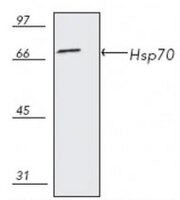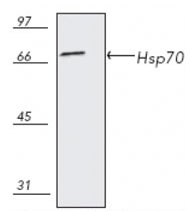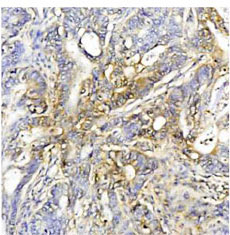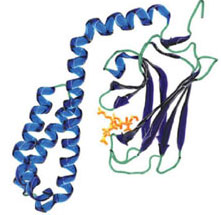386032 Sigma-AldrichAnti-Hsp70 Mouse mAb (C92F3A-5)
Anti-Hsp70, mouse monoclonal, clone C92F3A-5, recognizes the ~70 kDa Hsp70. Does not cross-react with Hsc70. It is validated for use in ELISA, FC, WB, ICC, IP & IHC (frozen and paraffin sections).
More>> Anti-Hsp70, mouse monoclonal, clone C92F3A-5, recognizes the ~70 kDa Hsp70. Does not cross-react with Hsc70. It is validated for use in ELISA, FC, WB, ICC, IP & IHC (frozen and paraffin sections). Less<<Anti-Hsp70 Mouse mAb (C92F3A-5) MSDS (material safety data sheet) or SDS, CoA and CoQ, dossiers, brochures and other available documents.
同义词: Anti-Heat Shock Protein 70
Recommended Products
概述
| Replacement Information |
|---|
重要规格表
| Species Reactivity | Host | Antibody Type |
|---|---|---|
| A Broad Range Of Species | M | Monoclonal Antibody |
Products
| 产品目录编号 | 包装 | 数量 / 包装 | |
|---|---|---|---|
| 386032-50UGCN | 塑胶安瓿;塑胶针药瓶 | 50 μg |
| Product Information | |
|---|---|
| Form | Liquid |
| Formulation | In PBS, 50% glycerol, pH 7.2. |
| Positive control | L929 cells, Human colon cancer tissue |
| Preservative | ≤0.1% sodium azide |
| Quality Level | MQ100 |
| Physicochemical Information |
|---|
| Dimensions |
|---|
| Materials Information |
|---|
| Toxicological Information |
|---|
| Safety Information according to GHS |
|---|
| Safety Information |
|---|
| Product Usage Statements |
|---|
| Packaging Information |
|---|
| Transport Information |
|---|
| Supplemental Information |
|---|
| Specifications |
|---|
| Global Trade Item Number | |
|---|---|
| 产品目录编号 | GTIN |
| 386032-50UGCN | 04055977189889 |
Documentation
Anti-Hsp70 Mouse mAb (C92F3A-5) MSDS
| 职位 |
|---|
Anti-Hsp70 Mouse mAb (C92F3A-5) 分析证书
| 标题 | 批号 |
|---|---|
| 386032 |
参考
| 参考信息概述 |
|---|
| Hang, H., and Fox, M.H. 1995. Cytometry 19, 119. Kilgore, J.L., et al. 1994. J. Appl. Physiol. 76, 589. Heufelder, A.E., et al. 1992. J. Clin. Endocrinol. Metab. 74, 724. Gower, D.J., et al. 1989. J. Neurosurg. 70, 605. Milarski, K., et al. 1989.J. Cell Biol. 108, 413. Vass, K., et al. 1988. Acta Neuropathologica 77, 128. Welch, W.J., and Suhan, J.P. 1986. J. Cell Biol. 103, 2035. |










